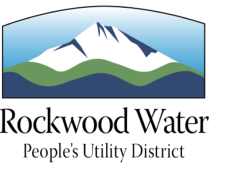- Adjust your sprinklers so that they’re watering your lawn and garden, and not the street or sidewalk.
- Water early in the morning (before 10 a.m.) or later in the evening (after 6 p.m.) when temperatures are cooler and evaporation is minimized.
- Set it, but don’t forget it. Whether you have a manual or automatic system, be sure to adjust your watering schedule. As the weather changes, so will your landscape’s watering needs.
- Water established lawns about 1 inch per week (a bit more during hot, dry weather). Free water measuring gauges are available to District customers upon request.
- Inspect your overall irrigation system for leaks, broken lines, or blockage in the lines.
- Consider replacing some grass area with low water use plants and ornamental grasses. They are easier to maintain than grass, look beautiful, and require far less water.
- Group plants with like watering needs. Creating “watering zones” in your garden will allow you to give each plant the water it requires.
- Add a shut-off nozzle to your garden hose and save about 5-7 gallons each minute your hose is on. Free hose trigger nozzles are available to District customers upon request.
- Adjust your mower to a higher setting. A taller lawn provides shade to the roots and helps retain soil moisture, so your lawn requires less water.
- Mulch your plants to improve soil, reduce weeds, and prevent evaporation.
- Improve water penetration by aerating your lawn. Aeration can renew compacted soil allowing water and air to reach the roots of your lawn.
- When washing your car, use soap and water from a bucket and use a hose with a shut-off nozzle to rinse.
- Use a broom to sweep your driveway and sidewalks clean instead of using water to remove debris.
For more information on how you can conserve water, including how-to videos, resources, and events, visit the Regional Water Providers Consortium’s conservation page.

